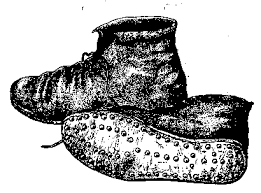


On November 4, 1980, Ronald Reagan was elected president of the United States, marking a fundamental shift in the nation’s approach to regulation – and in the Enforcement Division. Not for the last time, a burst of vigorous enforcement would be followed by caution and retrenchment. As the new president’s inauguration approached, his transition team produced a report on the SEC displaying corporate America’s enmity towards the Commission and in particular the Enforcement Division. The report grudgingly acknowledged the Division as the “envy of government,” but simultaneously recommended draconian cuts to the Division and specifically suggested Sporkin’s removal.(1) The worst never came – wholesale cuts were avoided, and Sporkin managed a graceful exit by accepting former chair William Casey’s invitation to become General Counsel of the Central Intelligence Agency (he would later become a Federal judge). But it was clear that enforcement would be reined in. The Commission’s new chair, John Shad, and a new Director of Enforcement, John Fedders, both rejected the expansive approach to enforcement championed by Sporkin. An early sign of their narrower approach was the Commission’s 1981 decision not to pursue charges against Citigroup for circumventing foreign tax laws.(2) Even as they retreated on one front, however, Shad and Fedders identified a new issue for the Division to target: insider trading.

Insider trading had always attracted attention from the Commission – witness Cady, Roberts and Texas Gulf Sulphur – but a series of recent developments had made trading on nonpublic information both easier and more lucrative.(3) A takeover boom beginning in the late 1970s created opportunities for those who knew of the deals before they were announced. Standardized stock options made it easier to turn small investments into big gains. And trading through foreign accounts shielded account holders from the scrutiny the staff could quickly apply to domestic accounts. By 1981, there was widespread perception that insider trading was rampant. All this led Shad to make his most well-known statement: asked about insider trading, he announced “we’re going to come down with hobnail boots.”(4) The new focus on insider trading also fit with the administration’s antiregulatory agenda, as it usually targeted individuals rather than corporations and, some on the staff suspected, diverted efforts from governance reforms.(5) By the end of 1981, a third of the Division’s investigations involved insider trading, up from 10 percent a year before.(6)
(1) SEC Transition Team Final Report, Dec. 20, 1980: 7, 9; Stan Crock and Jerry Landauer, Reagan Team Urges New Direction for SEC, Suggests Sporkin May Go, Wall St J Jan. 22, 1981: 27.; SEC Enforcer Blasts Proposals to Change Divisions, Cut Staff, Wall St. J. Jan 26, 1981: 10.
(2) Kenneth B. Noble, The Dispute over the SEC, NY Times April 21, 1982: D1.
(3) Gary Lynch oral history: 16-17.
(4) Kenneth A. Noble, S.E.C. Chief Plans Insider Trading Curb, NYT Oct. 26, 1981.
(5) Bill McLucas oral history: 10.
(6) Richard L. Hudson, SEC May be Losing Its Former Toughness, Some Observers Think, Wall St. J. March 22 1982: 1.
(Courtesy of the estate of John R. Evans; made possible through a gift from Quinton F. Seamons)